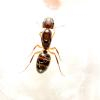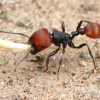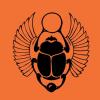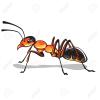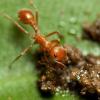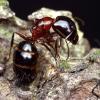Yeah, I caught a prenolepis imparis queen back in November, she is still alive, but no eggs:(
You 100% on the ID? November seems really really early for P. imparis, well, at least for us on the East coast, not sure what California flight are like. The Fall here is all Lasius flights, which look super-similar to P. imparis.
I was thinking that it may have been a prenolepis dumping flight, where all the alates that didn’t fly during nuptial flight season were evicted. But actually now that I think it, it might actually be a lasuis alienus queen.

